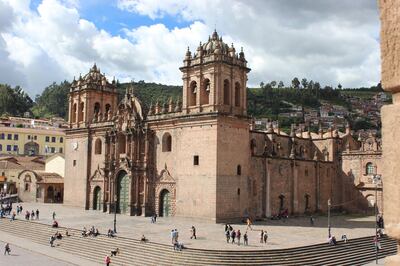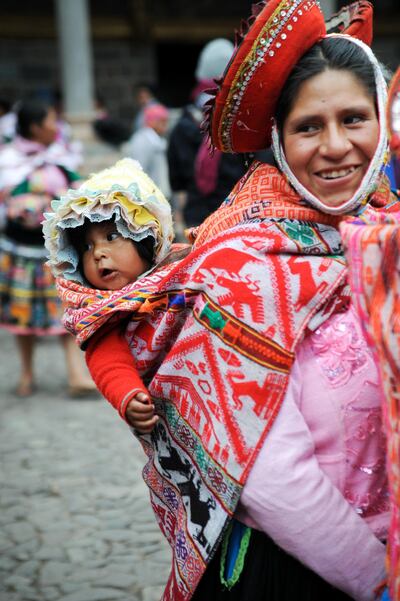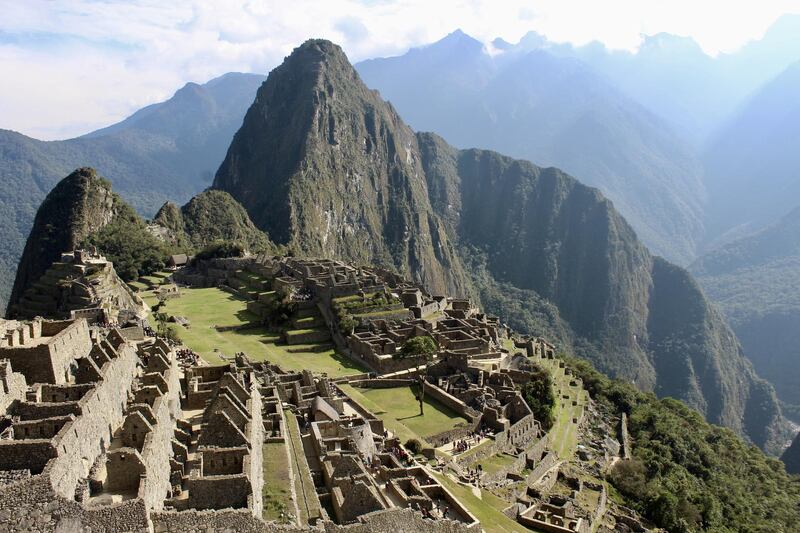Why Cusco?
The city is a gateway to the fabled lost city of Machu Picchu, but there is much more to Cusco than that. It was once the capital of the vast and powerful Incan empire, and it is South America's oldest continuously inhabited city, often referred to as the "Rome of South America".
Cusco, which was said to have been built in the shape of a puma, sits more than 11,000 feet above sea level, and was the centre of the powerful Incan Empire in the 15th and early 16th centuries.
It offers an array of ancient cultures juxtaposed against modern life – Spanish colonial homes built on top of Inca stone walls, local Quechua culture alongside modern attractions and nightlife.
Many colonial-era mansions with open patios and courtyards have been converted into atmospheric hotels, museums, restaurants, and boutiques.
The city has first-rate architecture – from the Korikancha, or Temple of the Sun, with the Catholic Church of San Domingo built on its stone foundations, to the great Cusco Cathedral, with its mingling of Catholic and Incan imagery. Cusco is also a centre for colourful Andean crafts and alpaca woollens and has its own distinctive cuisine.
A comfortable bed
Palacio Del Inka in the historic centre is steps away from the Sun temple. This palace-turned-hotel has a high-ceilinged lobby and is decorated with carved wooden doors, tapestries, and paintings. There are Quechua women weaving in the courtyard and a harpist in the breakfast room. Doubles start at about US$149 (Dh547) per room.
Belmond Hotel Monasterio is housed in what was a monastery built in the 1590s. This luxury hotel is situated close to the central Plaza de Armas, and combines old-world charm with contemporary elegance – think rich wooden furnishings, candlelit courtyards, antiques and Cusco-school artworks. Doubles start at about $300 (Dh1,100) per night with breakfast.
Part of the Belmond luxury hotel group, the Palacio Nazarenas, a former convent, has walls with colonial frescoes and a fabulous spa that offers aromatherapy using Peruvian ingredients such as local herbs, pink Andean salt and purple corn.
It also features the city’s first outdoor pool and cuisine by famous Peruvian chefs. Doubles start at around $500 (Dh1,830) per night.
Find your feet
The Plaza de Armas is the centre of town and is surrounded by stone arcades built on Incan foundations, and colonial churches, fountains and statues.
The cathedral on the main square is a must-see. Inside are several chapels decorated in silver and gold, and an impressive range of 17th-century canvasses, including one of the Last Supper with local Quechuan motifs, like a guinea pig on the dinner table.
Wander through the maze of cobbled streets that branch off the main square – look at the original Inca stone walls on which many buildings have been built. Head to Korikancha, on which the Catholic Church of San Domingo has been built.
Admire the remains of the Incan temples with niches aligned to catch the sunlight. Visit the Museo de Arte Precolombino, one of the many museums in Cusco, which contains hundreds of wood, stone, silver and gold artefacts. The nearby San Blas district is home to artist workshops and cafes around its church.

Meet the locals
Head to the gargantuan San Pedro market, buzzing with energy – walk through the aisles lined with stalls overflowing with strange fruits like lucuma and chirimoya (custard apple), discs of chuta bread, deep purple corn, dried alpaca meat, packets of quinoa and a zillion varieties of potatoes. One side of the market sells all the entrails of the cow, others have stalls selling soups and local snacks, with tables and chairs available.
This is where the locals buy their supplies and have a quick bite. It's a colourful scene with Quechua women in voluminous skirts and with babies strapped to their backs.

Book a table
Situated on the first floor of an old colonial house with dried garlic bundles and paprika garlands hanging from the ceiling, Cicciolina serves good Spanish tapas alongside Peruvian duck, scallops and a local salad of corn, cheese and fava beans.
A meal for two costs about $44 (Dh160); www.cicciolinacuzco.com.
Gaston Acurio's Cusco outlet restaurant, Chicha, overlooks the town's Plaza Regocijo and serves fresh river fish ceviche, alpaca steak and quinoa stew.
Try their vegetarian take on local chupe soup with quinoa, pumpkin, tofu and coconut milk (www.chicha.com.pe).
MAP Cafe is an elegant glass-enclosed restaurant inside the city's pre-Columbian art museum, and serves Peruvian fusion food – must try the sacha inchi (Amazonian nut) and dark chocolate encased in white chocolate stuffed with sweet caramel and coffee ice-cream. A three-course dinner is $62 (Dh228); 0051 84 242476.
Shoppers’ paradise
Cusco is a great place to pick up Andean arts and crafts. The San Blas area is full of art galleries, artisan’s workshops and ceramics shops.
Head to the Centro Artesenal Cuzco (Tullumayo Ave 1226) for beautiful knitted alpaca wool scarves, ponchos, painted ceramic plates, Inca-style masks, wood and stone carvings, old tapestries, Inca-design jewellery and art canvases painted by locals.
Admire retablos, or portable altars, and woven tapestries at Tanakar Gallery at Calle Palacio 12, 2nd Floor.
Another good place to shop is Ilaria, one of the finest jewellery stores in Peru, which has lovely silver and wood Andean-style pieces and has several branches in Cusco.
The Centre for Traditional Textiles works with local Quechua communities to produce high quality bags, scarves, ponchos, throws, tablecloths and decorations – you can also watch the weavers (www.textilescusco.org).
Don’t miss
Just on the northern outskirts of Cusco, on a hill overlooking the city, are the remains of the fortified complex of Saqsaywaman – gargantuan blocks of granite, some weighing as much as 300 tonnes, fit together without any mortar and zig-zag their way into a formidable fortress.
Many of the stones were later taken and used to build houses in Cusco, but even now the site gives you an idea of the engineering prowess of the Incas.
What to avoid
Cusco is 3,400 metres above sea level, so there is a strong possibility you may suffer from altitude sickness. Spend the first day relaxing. Bring the necessary medication. Every hotel has oxygen masks.
How to get there
Emirates flies to Lima via Sao Paulo. Return tickets cost about Dh10,300, including taxes. Latin American Airlines flies fro Lima to Cusco in 1 hour 15 minutes. Flights cost from $184 (Dh675) return including taxes.





